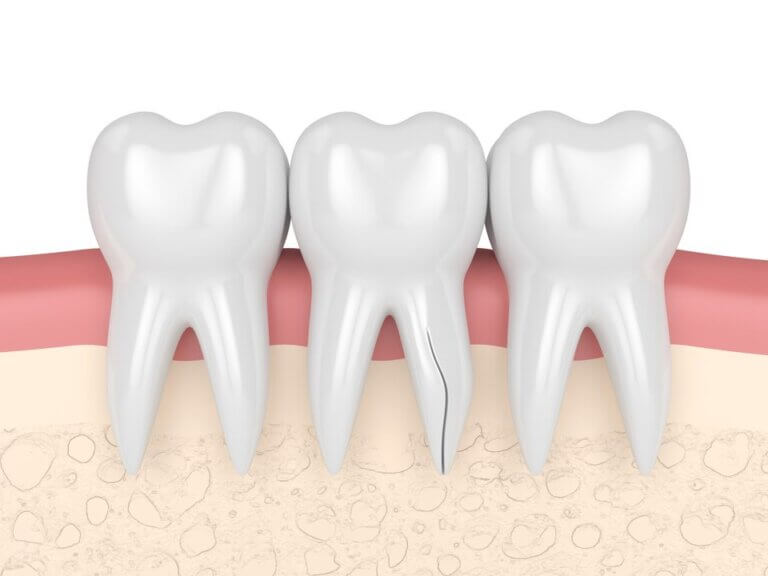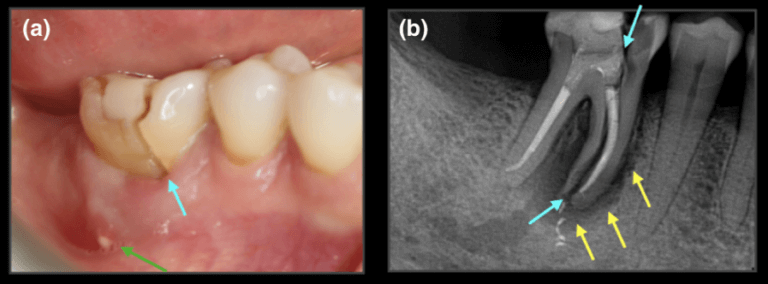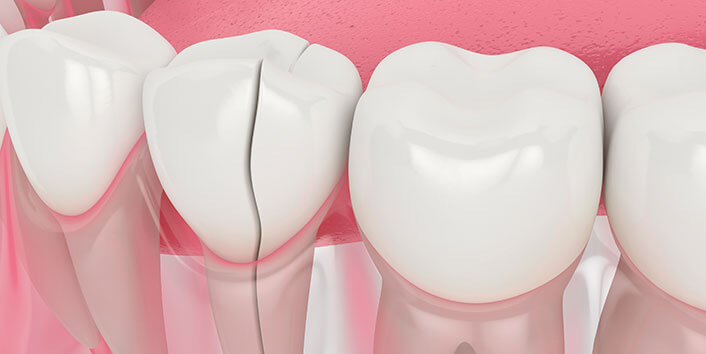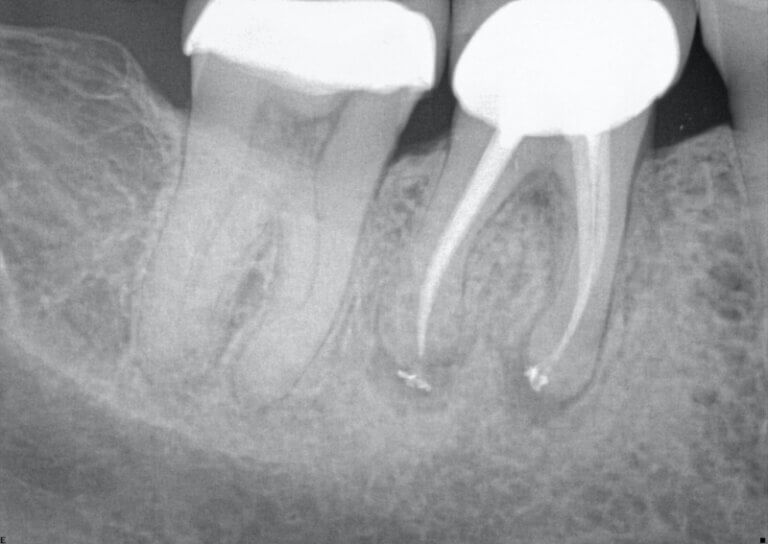Vertical Root Fracture

What Is A Vertical Root Fracture?
A Vertical Root Fracture is a crack that develops along the length of a tooth’s root. These fractures often occur in teeth that have undergone root canal treatment but can also affect untreated teeth. The condition can be difficult to detect because it may not present with obvious symptoms.
Unlike other dental problems, vertical root fractures are typically subtle, often requiring advanced diagnostic tools like cone beam computed tomography (CBCT) to confirm their presence. Early detection is crucial as untreated fractures can lead to infections, bone loss, and tooth extraction.
Before you contact a Toronto dentist to examine Vertical Root Fracture, there are some things you should know as a patient:
- Why Do I Have A Vertical Root Fracture?
- Signs And Symptoms Of A Vertical Root Fracture
- Treatment Options For A Vertical Root Fracture
- Managing A Vertical Root Fracture Until You Can See The Dentist
- Frequently Asked Questions About Vertical Root Fractures
If you have questions about Vertical Root Fracture or other dental problems, please contact us for more information
Why Do I Have A Vertical Root Fracture?
Understanding the reasons behind vertical root fractures is essential to prevent and address this dental issue. Some common reasons for Vertical Root Fracture include:
- Endodontic Procedures: Teeth that have undergone root canal therapy are more prone to fractures due to weakened tooth structure.
- Use of Screw Posts: Adding a screw post during a restoration process can create internal stress, increasing the risk of cracks.
- Trauma or Bruxism: Accidents or habits like grinding and clenching can exert excessive pressure on teeth, leading to fractures.
- Weakened Tooth Structure: Large fillings can compromise tooth strength, making them more vulnerable to fractures.
- Age and Wear: Over time, natural wear and tear reduce the structural integrity of teeth, increasing fracture risk.
- Inadequate Restorations: Poorly designed or fitted dental work can create stress points in the tooth.
If you suspect you have Vertical Root Fracture or are experiencing dental pain, it’s crucial to seek prompt dental care. A dentist will assess your tooth and recommend an appropriate treatment plan, which may include root canal therapy or tooth extraction to alleviate the pain and prevent further complications. For more information about Vertical Root Fracture, please contact us.

Signs And Symptoms Of A Vertical Root Fracture
Recognizing the signs and symptoms of a vertical root fracture is crucial for timely diagnosis and treatment. Here are some key indicators to be aware of:
- Sharp Pain When Chewing: Sudden pain when biting down may indicate a hidden fracture.
- Intermittent Sensitivity: Pain that comes and goes, often triggered by chewing or temperature changes.
- Swelling and Gum Tenderness: Localized swelling or tenderness near the affected tooth.
- Dental Abscess: A pimple-like bump on the gums, often painful, can indicate an infection caused by the fracture.
- Tooth Mobility: Loosening of the tooth may be a sign of a structural issue.
- Inconsistent X-ray Findings: Traditional X-rays may not always clearly show a vertical root fracture. However, advanced imaging techniques like cone beam computed tomography (CBCT) can provide a more accurate diagnosis.
If you suspect you have Vertical Root Fracture, a dentist can help assess your tooth and recommend an appropriate treatment plan. For more information about Vertical Root Fracture, please contact us.

Treatment Options For A Vertical Root Fracture
Treatment for vertical root fractures depends on the extent of the damage. Common solutions include:
- Tooth Removal: In many cases, when a tooth is affected by a vertical root fracture, extraction is the most practical solution to prevent further complications and maintain oral health.
- Dental Implant: After tooth removal, dental implants offer a reliable and aesthetically pleasing solution. An implant is surgically placed into the jawbone, providing a strong foundation for a replacement tooth.
- Dental Bridge: Dental bridges can be used to replace a missing tooth when adjacent teeth are healthy. The bridge is anchored to the neighboring teeth, providing stability and functionality.
- Denture: Dentures are removable dental appliances designed to replace multiple missing teeth. They are a suitable option when several teeth are affected by vertical root fractures.
Consult your dentist to determine the most appropriate treatment plan based on your needs and oral health condition. For more information about Vertical Root Fracture, please contact us.

Managing A Vertical Root Fracture Until You Can See The Dentist
If you suspect a vertical root fracture, follow these steps to manage discomfort until you can seek professional care:
- Take Over-the-Counter Pain Relief: Use ibuprofen or acetaminophen as directed to alleviate pain.
- Maintain Oral Hygiene: Gently brush and floss around the affected area. Rinse with warm salt water to reduce inflammation.
- Avoid Trigger Foods: Stick to soft, room-temperature foods to minimize sensitivity.
- Protect the Tooth: Avoid chewing on the fractured tooth to prevent further damage.
- Apply a Cold Compress: Reduce swelling and pain with a cold compress on the affected side of your face.
These measures provide temporary relief, but prompt dental care is essential for long-term management. For more information about Vertical Root Fracture, please contact us.
Frequently Asked Questions About Vertical Root Fractures
- Can a vertical root fracture heal on its own?
No, these fractures do not heal naturally. Prompt dental intervention is essential to prevent further complications.
- Are certain teeth more prone to vertical root fractures?
Yes, teeth that have undergone root canal treatment or have large restorations are at higher risk.
- Can a vertical root fracture occur in a healthy, untreated tooth?
While less common, vertical root fractures can occur in healthy teeth due to trauma, excessive biting force, or using teeth to open objects.
- Can a dental crown protect against vertical root fractures?
While dental crowns provide structural support, they do not eliminate the risk of fractures, especially if underlying conditions, such as teeth grinding or untreated tooth decay, exist.
Vertical root fractures are serious dental issues that require prompt diagnosis and treatment to prevent further complications like infection or tooth loss. For more information about Vertical Root Fracture, please contact us.

